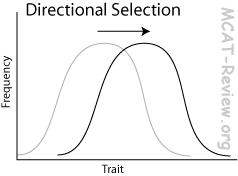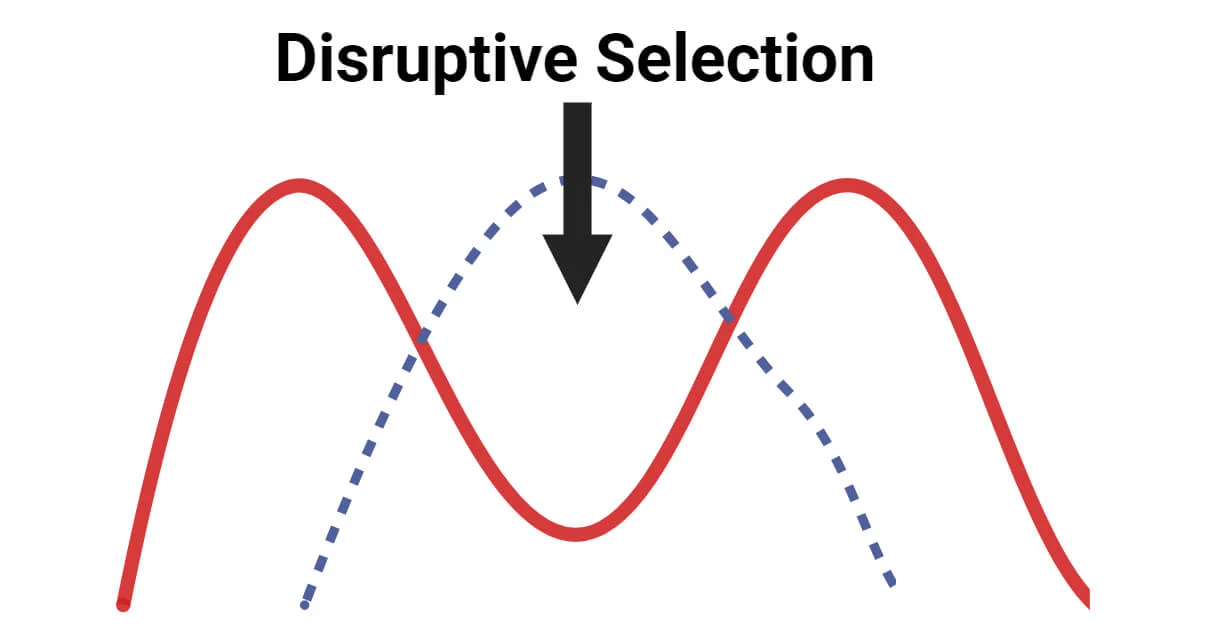almost done lol
1/204
There's no tags or description
Looks like no tags are added yet.
Name | Mastery | Learn | Test | Matching | Spaced |
|---|
No study sessions yet.
205 Terms
Microevolution
Changes in the frequency of an allele within a single population
Macroevolution
Evolutionary forces that transcend the boundaries of a single species
Population
A group of individuals of the same species living in the same geographic area at the same time
Formula for genotype frequency
Number of individuals with genotype / number of total individuals
Formula for allele frequency
Number of one specific allele / number of total allele
Null model
Simplified scenario showing what we’d expect to happen if nothing is affecting the system
Hardy-Weinberg Equilibrium
In the absence of evolutionary processes, the allele frequencies in a large population do not change from generation to generation
Outcome 1 (HW Equilbrium)
Allele frequencies are not changing
The gene is at equilibrium
The gene is not evolving
Outcome 2 (HW Equilbrium)
Allele frequencies are changing
The gene is in disequilibrium
The gene is evolving
Break assumptions of hardy weinberg
Natural selection
Large population
Migration
No new mutations
Random mating
Natural selection
Some genotypes are at a disadvantage, and do not survive or contribute to the gene pool equally
Directional selection
One extreme phenotype provides a fitness benefit, so the average phenotype in the population moves toward that extreme

Stabilizing Selection
Phenotypes in the middle of the range provide a fitness benefit, so extreme phenotypes become less common

Disruptive selection
Phenotypes of both extremes provide a fitness benefit, so intermediate phenotypes become less common

Balancing selection
No single phenotype is favoured at all times, so a diversity of phenotypes are always maintained in the population
Environmental variation
Variations in the environment favour different phenotypes at different times or places
Frequency- dependent selection
Rare alleles provide a fitness benefit
Heterozygote advantage
Have higher fitness than homozygotes
Genetic drift
The frequency of alleles can be altered by random events affecting survival or reproduction. Is greater in small population as any one random event affects a larger % of population
Fixation
where a single allele becomes the only one in the population
Founder effect
When a new population is founded, allele frequencies will change based on the random immigration of individuals to form the new population
Genetic bottleneck
Sharp reduction in population size randomly removes individuals from the population, and the remaining individuals have a different allele frequencies
Gene flow
Some alleles are added or lost from the gene pool due to movement of organisms or alleles. With enough allele frequencies will become identical
Mutation
Allele frequencies may be altered by new alleles generated by mutations in individuals. Happen when the DNA of an organism is permanently changed. Happens randomly.
Adaptive evolution
Evolution that results in a better fit between individuals and their environments
Non-adaptive evolution
Evolution that has random effects on fitness. Individuals are not better adapted
Speciation
The evolution of two or more distinct species from a single ancestral species
Allopatric speciation
Species is split into two geographical groups, divided by a barrier. The two groups diverge over time to become two species
Sympatric speciation
Species diverges into two groups while occupying the same geographical area
Vicariance
A population is split into smaller, isolated population by a geographic barrier
Allopolyploid
A polyploid formed by hybridization between two species
Autopolyploid
A polyploid formed by doubling chromosomes from the same species
Speciation by genome duplication
An error in meiosis produce a diploid, and offspring with a duplicated genome (2n => 4n)
Isolation occur because tetraploid (4n) and diploid (2n) crosses produce infertile triploid offspring (2n + n = 3n)
Adaptive radiation
Rapid evolutionary diversification in a single lineage, producing many descendant species with a wide range of adaptive forms
Ecological opportunity
A new habitat or resources; reduced competition or predation
Innovation of new trait
A significant new morphological, physiological or behaviour trait arises
Evolution of dentition
Allowed for dietary diversification and specialization in different groups
Rise of flowering plants
Provided significant sources of food and habitat for mammals
Extinction of the dinosaurs
Reduced predation pressure on mammals and opened niches for new mammals species
Bipdealism
Freed up the arms, allowing for efficient tool use, gathering and carrying food, and using hands to communicate. Ardipithecus first hominin to do this
Homo genus and big brains
Speculated this could aid social interaction, tool use, language, responding to changing environments, and allowing for conceptual complexity. Has increased 3 fold over 2.5 million years
Tool usage
Helped collect food and fuel, build shelters, cook food, and extract other resources more efficiently. Only less than 1% present in animals
Reduced jaw muscles
Cooking food before eating it makes food softer, and it is easier to extract nutrients. Became smaller attachment area on the skull.
Language evolved in Homo genus
Convey information about danger, food and other resources and coordinate their communities.
Modern humans
Homo sapiens lived alongside and interbred with other Homo species like the Neanderthals and the Denisovans
Skin colour ad balancing reaction
Increased skin pigments blocks more UV radiation
Folate => needed for healthy cells and fetal development but degraded by UV ration
Vitamin D => Needed for healthy bones but is synthesized in the skin by UV radiation
Ecology
The scientific study of interactions between organism and their environment
Biotic environment
Living things an organism interacts with
Abiotic
Non-living things an organism interacts with
Organismal ecology
A field studying the morphological, physiological, and behavioral adaptations that have evolved in response to ecological selection pressures
Population ecology
Studies groups of individuals of the same species and the factors affecting their population size and distribution
Community ecology
Studies all population of species in an area and how species interact with each other
Ecosystem ecology
Studies all biological communities in an area and their abiotic environment
Landscape ecology
Studies how multiple ecosystems interact by exchanging energy, nutrients and organism
Global ecology
Studies the relationships among organisms and their environments
Behavioural ecology
Studies behavioural adaptations that have evolved in response to ecological selection pressures
Proximate cause
How the behaviour works. The biological mechanism that lead to the behaviour
Ultimate cause
Why the behaviour exists. The evolutionary benefit to survival or reproduction
Innate behaviour
Behaviour inherited genetically does not have to be learned, and is typical of a species
Learned behaviour
An enduring change in an individuals behaviour resulting from a specific experience
Optimal foraging
Maximizes the amount of usable energy they take in, given the costs of finding an ingesting their food and the risk of being eaten while they’re at it
Trap-lining
Individuals visit food sources in a regular, repeatable sequence
Root foraging
Plants increase root growth in nutrient-rich patches of soil
Decentralized
Slime mold colonies explore many paths to food can recreate efficient
Evolutionary game theory
A mathematical modeling approach to predicting the outcome of natural selection on behaviours when multiple “players" are interacting
Producers vs Scroungers
Some individuals find food, others watch and steal it
Group vs solo foraging
With other individuals may increase access and abundance of food, but increases competition
Prey preferences
Choosing different prey than other individuals reduces direct competition for that food
Sexual selection
A type of natural selection that favours individuals with traits that increase their ability to obtain mates, or choose good mates
How many potential mates are available
If mates are rare, individuals may be less choosy
How much competition is there for access to mates
High competition can lead to intense sexual selection
How much parental care can the mates contribute
When one sex contributes substantial care, the other sex may be choosier
What quantity and quality of resources are available
Mating success may be tied to who controls valuable resources
Polygyny
One male mates with two or more females (more sexual dimorphism)
Polyandry
One female mates with two or more mates (more sexual dimorphism)
Promiscuity
Males and females each have two or more mates
Habitat selection
The rules used by organisms to choose among patches of habitats that differ in things like food availability or predation risks
Density-Dependent
Organisms make different choice of habitat depending on how many individuals are present
Habitat matching
Organisms select habitats whose environmental conditions match their phenotypes
Microhabitat selection
Organisms choose specific, small scale environments within a larger habitat that best suits their needs
Dispersal
The movement of individuals from their place or origin to a new location
Active Dispersal
Organisms move location by their own power or abilities. Involves behavioural decision making
Passive Dispersal
Organism rely on external factors like wind or water to move them
Migration
A seasonal long distance movement of large number of organism form one geographic location or habitat to another
Piloting
A type of navigation where animals use familiar landmarks to find their way
Compass orientation
A type of navigation where movement occurs in a specific direction
True navigation
A type of navigation where an animal can reach a specific point on the Earth’s surface
Communication
Any process in which a signal from on individual modifies the behaviour of another individual
Auditory
Vocalization or vibrations
Visual
Body colour, posture, or movement
Chemical
Pheromones or odors
Tactile
Touch or physical contact
Other
Electricity and temperature
Honest signals
Signals accurately convey information. Natural selection most of the time favours this.
Deceptive signals
Signals mislead the receiver to the benefit of the sender
False calls
Calls of predatory animals to scare off rivals and take their food. This takes advantage of honest calls warning of danger
False chemicals
Release pheromones to lure prey
Altruism
Behaviour that has a fitness cost to the individual and a fitness benefit to the recipient
Cooperation
Interactions between individuals where both parties benefit from the interaction
Mutalism
A form of cooperation between different species